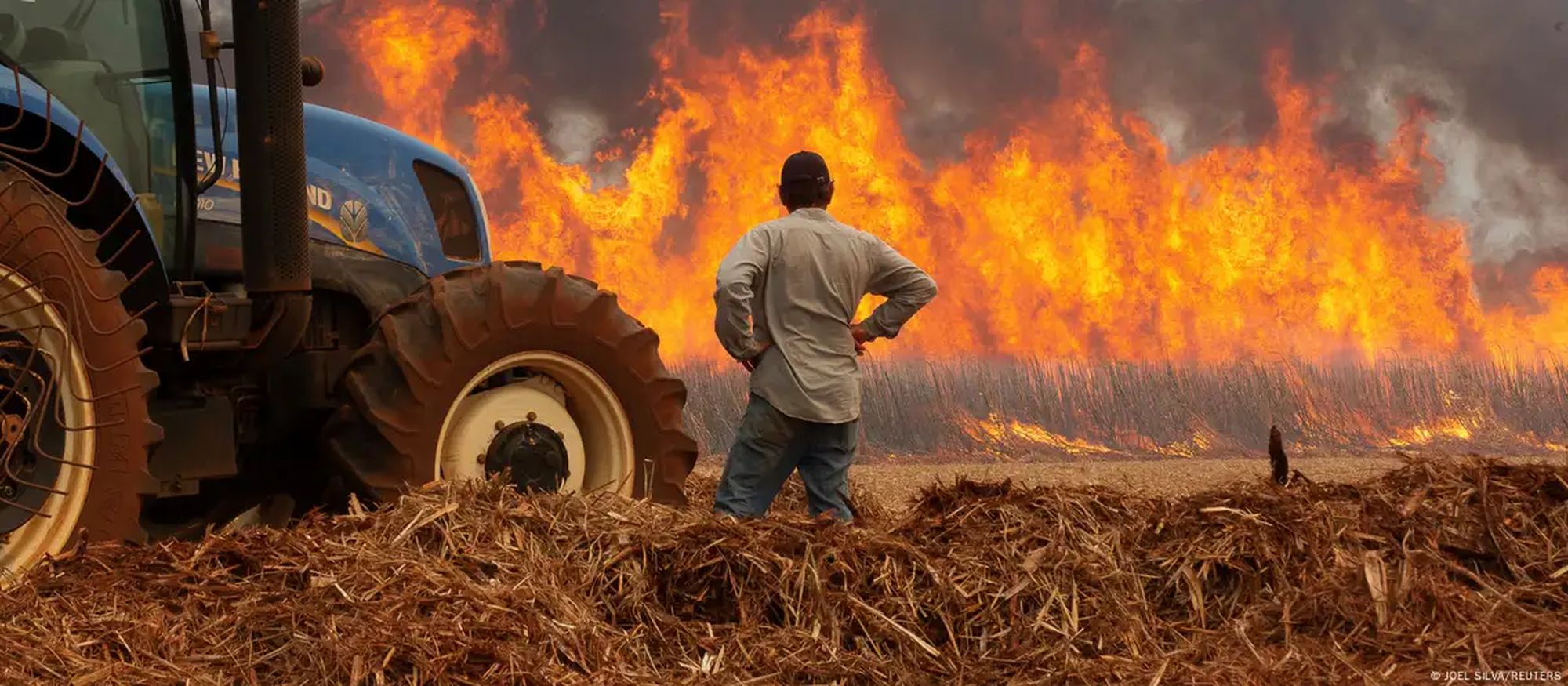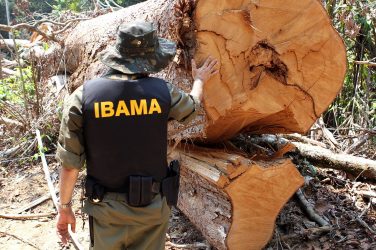Over the last week, some 2,700 fires have ripped through Brazil’s southern São Paulo state. More than 40 communities were on high alert, with the state capital and other cities shrouded in heavy, gray smoke.
At the latest count, authorities said more than 59,000 hectares (some 146,000 acres) had been destroyed by the flames, an area about the size of Chicago. This included vast swaths of sugar cane fields, one of the country’s top exports.
Federal police suspect arson is to blame for the fires, which started in different locations at the same time and spread rapidly through tinder-dry vegetation in a region that hasn’t seen rain for months.
“We had an explosive combination of three factors: high temperature, very strong winds and very low relative humidity in the last few days,” said São Paulo Governor Tarcisio de Freitas.
Extreme heat, drought fueling fires
The dry period in Brazil usually lasts from August to October. But climate experts with the World Weather Attribution, a group of scientists investigating the effects of climate change on extreme weather, said this past June was the country’s “driest, hottest, and windiest” month since records began in 1979.
Those conditions have seen São Paulo state and the Amazon rainforest, further north, suffering the worst fire season in decades. More than 3,480 separate fires were recorded in São Paulo in August, double the number in all of 2023. And in the first six months of 2024, the Amazon has had the highest number of fire outbreaks in the last 20 years.
These same extreme conditions have also fueled the record fires in the Cerrado Plateau, a tropical savanna, and the Pantanal, the world’s largest tropical wetland, a biodiverse area packed full of different species of plants and animals. The Pantanal, located between the Amazon and São Paulo, lost some 600,000 hectares to the flames in June, an area the size of Luxembourg.
About 20% of Amazon rainforest already gone
In a report in early August, WWA said the Pantanal fires had been “40% more intense due to climate change.” The data backs this up — yearly rainfall in the wetlands has steadily decreased for more than 40 years.
“These mega droughts are becoming more frequent and more severe,” said Carlos Peres, a Brazilian conservation ecology expert at the University of East Anglia, in the UK, adding that some three-fifths of Brazil is becoming increasingly dry.
Using satellite image analysis, Brazilian environmental institute MapBiomas revealed in June that the Amazon and Pantanal regions were “facing a serious reduction in water.” The Amazon rainforest experienced a historic drought from June to November 2023, driven by low rainfall and consistent high temperatures. But the Pantanal biome dried up the most in 2023, recording a 61% decrease compared to the 1985 historical average.
Peres grew up as the son of a cattle rancher in Para state in the 1960s and ’70s, on the eastern edge of the Amazon rainforest. Over his lifetime, he has seen the Amazon shrink by around 20%. And with that forest loss, some of what remains is increasingly going up in flames.
“Until about 25 years ago, forests in the Amazon, even if they sat on sandy soils and seasonally dry areas, they would not burn unless there had been some kind of human disturbance like timber extraction,” said Peres. “But that has changed.”
Drought, fire destroy Pantanal wetlands
He said consecutive droughts and shorter rainy seasons aren’t giving the soils enough time to recharge with water, making the vegetation above more vulnerable to fires. Luciana Gatti, who heads a group of investigators at INPE, Brazil’s National Institute for Space Research, said that the problem is only getting worse.
“We are accelerating the climate collapse,” said Gatti, stressing that deforestation was doing more to increase temperatures in the Amazon than global climate change. “The forest that remains is no longer the same; it’s like the Amazon is sick.”
Trees and other plant life act as climate regulators, by absorbing planet-warming carbon dioxide but also by releasing water vapor into the air through a process called evapotranspiration. In Brazil, said Gatti, the water evaporated from the Amazon and Pantanal wetlands act as a “climate buffer,” helping to cool the atmosphere. But with increasing forest fires and deforestation, that buffer is weakening.
In a 2021 study published in the journal Nature, Gatti wrote that parts of the southeastern Amazon were even starting to act as a source of CO2, instead of absorbing it as usual. And, she said, while deforestation has decreased somewhat in recent years, forest degradation due to fire and other factors has been getting worse. “And the problem is that each time, the fire is more uncontrolled.”
Fire, drought ‘more frequent’
“These extreme events are becoming more frequent,” said Julia Tavares, a Brazilian plant ecologist and postdoctoral researcher based at Sweden’s Uppsala University. In a 2023 study, she and fellow researchers investigated how different parts of the rainforest were responding to the warmer, drier conditions, and found that parts of the Amazon rainforest were becoming increasingly stressed.
The World Resources Institute reports that wildfires around the world are getting worse, destroying twice as many trees as they were 20 years ago. And a 2022 report from the UN Environment Program predicted extreme fires were set to increase 30% by 2050.
Tavares said, however, that the changing climate wasn’t directly sparking the fires in Brazil, adding that naturally occurring blazes were very rare in a tropical climate.
“It’s caused by people, human actions that are enhanced by climate change because then you have better conditions for the fire to be spread,” she said. She highlighted the huge plots of land, often cleared by ranchers and farmers setting fires using a technique known as slash-and-burn agriculture which are constantly nibbling away at the untouched rainforest.
“Things are changing very rapidly,” said Peres, outlining how increased fires and drought were putting water and food security at risk, wiping out biodiversity and harming human health.
He pointed out that every time a forest burns, it sets the stage for “more frequent and more intensive fires the next time,” as more of the vegetation dies and becomes fuel for the next wildfire.
“By the time that forest burns the third time, then you no longer have a forest,” said Peres. “And the damage that this is doing, both in terms of biodiversity loss and loss in carbon storage, is massive.”
DW





